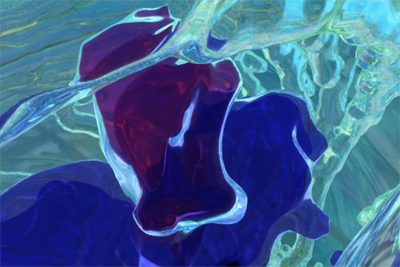Meridianus Divinitus
May 1st, 2009 - November 17th, 2009
Categories: Animation, MFA Thesis, Video / Film, Visualization, VR Art

About
Grav Weldon’s MFA thesis research Meridianus Divinitus is an exploration of the body energetic. It is a set of dynamic reinterpretations of chakra and meridian flows recreated to emulate aspects of the five ancient sacred elements - Earth, air, fire, water and spirit. The base simulation from which these five animations were generated was created from a system of rules determining the direction in which the individual particle systems would flow. These rules were derived from charts used for acupuncture and acupressure. Two types of particle flows were utilized to create the overall simulations. Chakras used interdependent forces while the meridians used a system of independent overlapping linear forces flowing in positions and directions determined by the information acquired from Weldon’s research. Once the simulation was complete, manifestations were then designed for the individual elements.
For Earth, sand was used to create single polygon sprites, which were then rendered as a group of individual grains of sand using surface shaders with alpha channels. Air used simple primitive spheres with complex shaders based on several types of noise to give the appearance of nebular gas. As the spheres overlapped each other with the varied opacity noise they gave an illusion of cloud formations. A similar solution was used to create fire. In addition to using noise-controlled opacity, a xray shader algorithm coupled with waveform displacement shaders were used. For Water an entirely different approach was taken; each particle was replaced by a metaball. Metaballs simulate liquid by using surface tension expression. Once the forms were derived from this, glass shaders were applied to create the end result. Spirit uses the same methodology as sand created for Earth. Photographs of individual flower petals were stamped onto sections of nurb spheres to simulate the curvature that most flower petals possess.